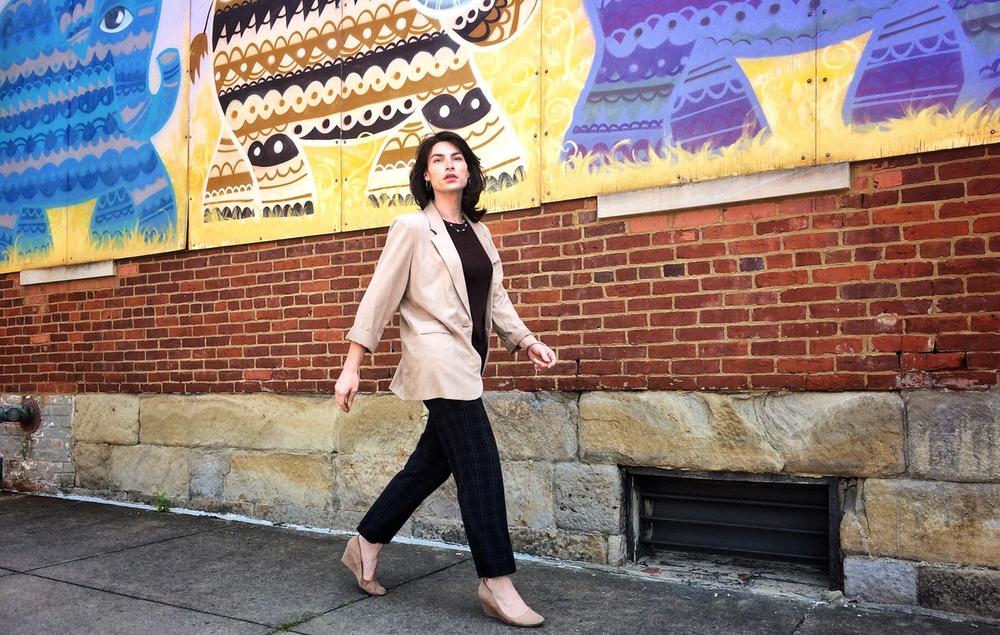Section Branding
Header Content
Catcalling, While Not Illegal, Is A Common Threat That Women Face
Primary Content
When she was a freshman at Mercer University, Clare Reverri didn’t have a car on campus. She relied on the bus to take her to Walmart, the grocery store and downtown. One weekend, as she stood at the bus stop, an SUV full of men pulled up next to her, rolled their windows down and started making comments about her body. One of them yelled, “Can I tap that?”
“I really, honestly just felt super scared. It’s like, they have a car, what are they going to do? They’re gonna come grab me? It’s crazy,” Reverri said.
When it comes to catcalling, two-thirds of women have a story like hers, according to a 2016 California State University study. Almost a quarter of them said it led to being inappropriately touched, and 20% reported being followed, regardless of whether they responded to or ignored their harassers.
For many women, street harassment is a weekly or even daily occurrence. Some have had to adapt their day-to-day lives in order to avoid these situations. Grace Hamilton grew up in Macon, where she said catcalling happens “all the time.”
“It happens pretty frequently, like if I’m downtown at dinner, I’ll get catcalled and so will my friends,” she said.
One night, she walked by Centenary United Methodist Church on her way home from Mercer’s campus. A man sleeping outside of the church’s community center woke up as she passed.
He yelled, “Hey, cutie,” and asked her for a lighter. Hamilton didn’t respond, but she was worried that he might follow her.
MORE: Survey Finds 81 Percent Of Women Have Experienced Sexual Harassment
Rejection violence, or the tendency of harassers to escalate their advances if their victim ignores or challenges them, is another concern.
“Honestly, I was kind of scared, so I called my mom and woke her up—this was probably like midnight or later—and had her stay on the phone with me until I got inside my house,” Hamilton said. “I didn’t want to give him any reason to continue, because, I don’t know, I never want to be rude, but at that point it’s kind of a concern for my safety.”
Young women, LGBTQ+ people, and people of color are more likely to experience street harassment, and incidents against them are often more severe or persistent. That’s according to Emily May, the co-founder and executive director of Hollaback!, an international organization based in New York City that encourages victims of street harassment to raise awareness by telling their stories.
“Many folks are not just carrying one of those identities, but many of those identities,” May said. “I had a friend, Kimberly, who said, ‘You know, Emily, I don’t know when I get harassed if it’s because I’m a woman, because I’m gay or because I’m Latina.’ You don’t always know.”
Catcalling falls under the umbrella of street harassment, which May defines as any sexual harassment occuring in public space. Aside from catcalling, it includes lewd gestures, stalking, groping and even public masturbation.
Street harassment boils down to an attempt at intimidation, May said, and can have significant impacts on those who are targeted because it denies them mobility and presence in public. She said victims often develop anxiety, depression and the feeling that they do not belong in their own communities.
“We see people start to make different decisions, such as taking different routes to school or to work, or showing up to school or work but being distracted by the harassment they faced on the way there,” she said. “We also see people choosing which schools or which work or what neighborhood they live in in hopes of trying to avoid harassment, although we all know that there is no neighborhood where harassment doesn’t happen, or even trying to change their clothes or how they look in hopes of avoiding it.”
In Macon, Hamilton bought pepper spray to carry with her, and she tries not to walk alone when she’s not on campus. Reverri has developed methods for protecting herself as well.
“I try not to walk far distances in Macon just to avoid those situations,” Reverri said. “I usually stay in areas that I’m comfortable in and that I know are safe, so I usually don’t put myself in situations where I’ll be vulnerable to that, but I also feel like even then, I’m always worried about it happening because you never know.”
But one place she’s been repeatedly targeted is unavoidable: the grocery store where she shops.
“Kroger is awful. You cannot go to Kroger by yourself,” she said. “Those situations are awful because you’re just trying to live your life, you can’t avoid going grocery shopping, and men just making comments? That makes me so uncomfortable, when I’m in an aisle and it’s just me and a man, and he says something (suggestive) to me.”
Other women respond more directly to harassing comments. May said that some people she has met through Hollaback! engage with their harassers, while others ignore them. Some head immediately into their cars or a nearby building, and still others file police reports if the harassment gets physical.
In most states, including Georgia, catcalling is not illegal. However, disorderly conduct misdemeanors can apply if the harassment is delivered “in a violent and tumultuous (noisy and uproarious) way that places someone in reasonable fear for her or his safety,” occurs in the presence of someone under 14 years old or would “naturally tend to provoke violent resentment” from the victim. Laws against simple assault, groping, public masturbation, indecent exposure and stalking are more clearly defined.
Get in touch with us.
Twitter: @OSTTalk
Facebook: OnSecondThought
Email: OnSecondThought@gpb.org
Phone: 404-500-9457

